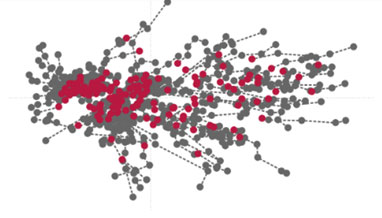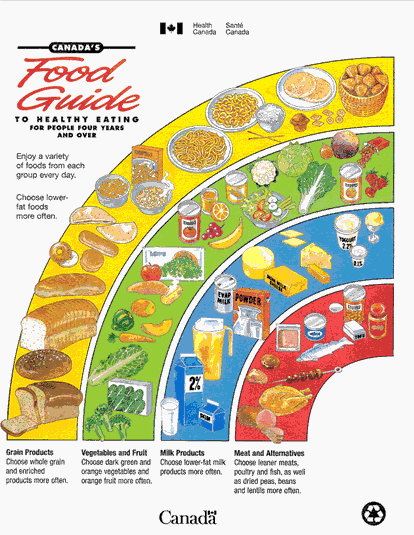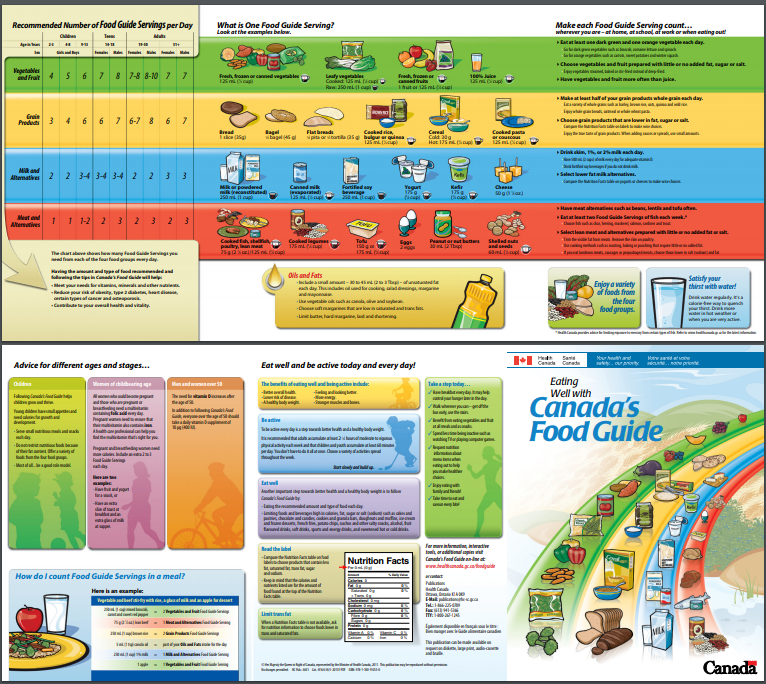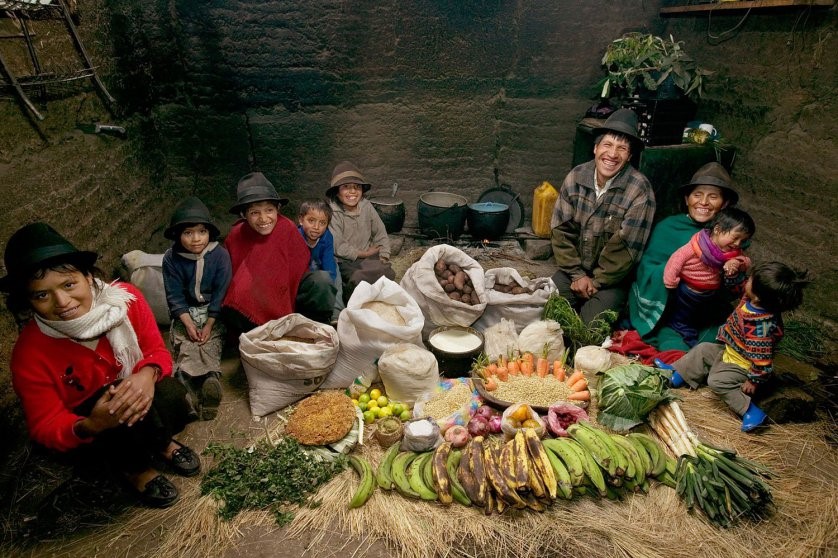Food: How have eating habits changed in the last 50 years?
All over the world what we eat is changing, but is what we’re eating nowadays better for us than what we ate 50 years ago?

The world has changed a lot in the last 50 years. Globalization, advances in technology, changing gender roles and climate change have had a huge impact on how we live our lives. But let’s think about what it means when we’re talking about food. How have our changing lifestyles and the changing world around us affected our diets? And are we more or less healthy than we were 50 years ago?
When we talk about changes to the food we eat, the fast food boom might spring to mind – stats about obesity and growing rates of diabetes are all over the media and we’re constantly surrounded by new research telling us that this or that is bad for us. But is what we eat nowadays that much worse for us than what we ate 50 years ago? Is it as simple as that?
We’re going to find out!
Table of contents
What the world eats
Trends in changing diets worldwide
Does more choice make us healthier or less healthy?
What the world eats
Firstly, let’s talk about food on a global scale – something which is very hard to do! Ways of life vary so much from continent to continent, from country to country, and, of course, from family to family, that it makes it very hard to talk about food generally. Cultures and environments are strong influencers of what we eat – environments provide us with the ingredients, and the people around us and those that came before us show us what to do with those ingredients.
The 2005 book Hungry Planet: What the World Eats is an excellent example of this, as it showcases what 1 family eats in a week in 24 different countries. Each photo shows a family’s entire weeks’ worth of food. Check some of them out and see how they compare to your weekly shop:

Source: Hungry Planet: What the world eats – Canada Melansons family of Iqaluit, Nunawut Territory.
Source: Hungry Planet: What the world eats -Ecuador: The Ayme family of Tingo.

Source: Hungry Planet: What the world eats – Bhutan: The Namgay family of Shingkhey Village.

Source: Hungry Planet: What the world eats – Egypt: The Ahmed family of Cairo.
The photos show just how much the culture and environments of each country influence what local people are eating, and where they get their nutrients and calories from. It’s photos like this that remind us just how different we are. However, these photos, which were taken as recently as 13 years ago, are already outdated, as the world of food progresses and moves forward. Our diets are all changing and growing, together, and in the same direction.
As time goes on, very real, very noticeable trends that are true for people all over the world start to be noticed, which may make us see that maybe we’re not quite so different after all! But what else do these changes mean? How do they change our diets and affect our health?
Trends in changing diets worldwide
There’s no denying that what’s available to us (environmental factors) and what the people around us are eating (cultural factors) are both huge influencers of our diets. But as the world shrinks, thanks to cheap international travel, international trade and the internet, both what we have access to, and what we are influenced by, are changing. The CIAT (International Center for Tropical Agriculture) have conducted research into worldwide changes in diets over the last 50 years. They found that:

Let’s talk about how our diets have become more diverse – and what that means on a global scale.
Our diets have become more diverse, but also more similar
Anyone who goes to a supermarket nowadays can see the huge variety of food available to us. Crops have migrated, and now they are grown in new countries. This means they’ve gone from not being present in the diet of a country at all 50 years ago, to making up a decent proportion of what that population eats now.
You can see how what we eat in Canada has changed over the last 50 years in the graph here below.

Sourced from the CIAT blog
The spread of these new crops, along with transporting methods that allow food to be transported around the world quicker than ever also mean that what we eat on a global scale is becoming more similar.

Sourced from the CIAT blog
The graph above shows how, since the 60s, diets of countries around the world have been getting more and more similar. The grey dots are moving closer towards the center, showing how nowadays diets vary a lot less between countries. In fact, the CIAT even said that the world’s average diet means eating like people do in Cape Verde, Colombia and Peru.

Does more choice make us healthier or less healthy?
But firstly, what do we mean by ‘healthy’?
If we think of how the food industry has changed, from as little as 100 years ago up until today, a distinct difference we see nowadays is choice. We aren’t limited to what’s “on our plate”, we are presented with aisles and aisles of food in supermarkets, markets, on the internet, in shops, restaurants and apps.
It was quite some time ago that the idea of choosing to eat specific foods and avoiding others came about…
So by ‘healthy eating’ do we mean ‘dieting’?
The idea of changing your diet to become slimmer or more ‘healthy’ has been around since as early as 1724 when the idea of cutting certain foods out of one’s diet was first written about (although it didn’t become part of popular culture until the start of the 20th century). However, by ‘healthy’ we most certainly do not mean dieting as there are 2 fundamental problems with dieting in general:
- Their temporary nature – If we stop eating for a few days, yes, we’ll probably lose weight, but then when we start eating again we’ll just gain it all back.
- They’re standardized – Just because eating a certain way means one person is healthy, it doesn’t mean that that’ll be the case for everyone
Are we stating the obvious? Yes! Everyone knows that nowadays because science has proved it. Studies have been done into the effects of different diets on the human body, and now, as well as knowing it’s bad for us, we know why!
We mean nutrition
Nutrition, or at least the idea of giving dietary advice, has been around since antiquity (around 2500 BC), but again, advice was based on observations (and chance findings) not on scientific principles. It wasn’t until:
1816 it was decided that protein was an essential part of our diets
1827 food was divided into carbohydrates, fat and protein
1912 the term ‘vitamin’ was coined
1926 vitamin C was isolated
1940 vitamins and minerals were first added to food (in the UK during world war 2)
1974 the first food pyramid was published in Sweden
1992 the USDA created their own food pyramid (below)
2002 the World Health Organization and the Food and Agriculture Organization published guidelines relating to objectives to prevent obesity, chronic diseases and dental caries
Canada’s Food Guide to Healthy Eating in 1992 (below) shows what we were told was healthy in the 90s. This was distributed together with a 16-page booklet to help people understand the guide and insure that they would use it. We can see guidelines that are still given today, for example: “Enjoy a variety of foods from each group every day” and “Choose lower fat foods more often”. There has however been criticism claiming the guide is “nutritionally insufficient” and that it puts too much focus on carbohydrates.

Canada’s Food Guide to Healthy Eating – 1992 – Front Source: Canada’s Food Guides from 1942 to 1992
15 years after the 1992 guide was produced, a new revised version was created by the government. The extensive guide has developed into a complete overview on how to create a healthy balanced diet. (below)

Source: Canada’s Food guide
In terms of finding out what our bodies need to work at their best, we’ve come a long way in the last 100 years, but is a standardized diet really the best thing for us as individuals?
And finally, we now know that what is healthy for one person, might not be healthy for another
The problem with governments giving out dietary requirements, is the same as the problem of dieting – the requirements are based on the ‘average person’, who has an ‘average metabolism’. This is a problem because there is no average person – and our metabolisms are all different. Psychology today published an article talking about a study carried out in 2015 that found that our metabolisms actually vary a lot more than we thought they did. In fact, by measuring ‘post-prandial glucose levels’ (PPGL) (how the body processes sugar) during and after meals, they found that the way one person’s body processes a meal one day might vary considerably the next day, even if the meal is the same. From person to person, this variation can be huge, and can even mean that the same meal could be healthy for one person, while being unhealthy for another. Some people are sensitive to carbohydrates, others aren’t. They would need completely different optimal diets.
When it comes to managing medical conditions affected by our diets, this research is ground-breaking, but even in terms of maintaining a healthy diet, it just proves that a standardized way of thinking is harming rather than helping us. We’re learning that we have to listen to our own bodies to find what works for us, and advancing nutritional science is helping us work out exactly what our bodies need.
Fad diets come and go, nutritional advice changes, but if we’re learning to listen to our bodies, surely, we can’t go wrong, and that’s better for us? And the diverse supply of food available to us nowadays can help us find what makes us feel good – more choice can only be a good thing?
It’s all about listening to your body
But not always! What do we mean by that?
Well, just because you’re craving sweets or chips doesn’t mean you should give into that craving, but listen to other signals your body’s giving you:
- Eat when you’re hungry.
It may sound obvious, but the ways our days are structured normally mean we eat at specific ‘meal’ times, but eating when you’re not hungry is much more likely to lead to overeating, which could lead to health problems. Also, by eating when you’re starting to get hungry, rather than when you’re extremely hungry, leads to making better food choices and not gorging on big dinners or unhealthy snacks.
However, like many things, our appetite changes with age. As we age, usually our appetite decreases, but that’s nothing to worry about if it’s only a small decrease, and this idea still applies.
It does not apply, however, if your appetite decreases dramatically, as this could be cause for concern and it might be worth seeing your doctor. Many illnesses associated with old age can be linked to a decrease in appetite, but a significant cause is also loneliness or depression. Organizing social events around meal times could help combat feelings of loneliness and could help create positive associations between eating and social events.
2. Stop eating when you’re satisfied—and before you’re stuffed
The good thing about eating when you’re hungry, is that when you do eat, you don’t overeat. And when you feel hungry again – you can eat again!
On the subject of loneliness and depression, while some people may lose their appetite when lonely, others may eat more to compensate. Boredom can also be a cause of overeating. In these circumstances, it is especially important to listen to your body, so that you’re not eating for the wrong reasons. If you pinpoint the cause of your overeating, you could take steps to combat the negative feelings you’re covering up by eating.
Medications and certain illnesses can also cause overeating. Elderly people with dementia, for example, can often forget they’ve eaten and eat again, or revert back to eating habits they had in their childhood. Keeping track of meals eaten in a visual way, for example on a board in the kitchen, could be a useful way of managing how much they’ve eaten.
3. Pay attention to how you feel after you eat
This is possibly the most important piece of advice. Keep track of how different foods make you feel. If you feel lethargic after certain meals, those foods may not be the best for you. Only eat foods that make you feel good in the long and short term! Experiment with different foods and different combinations to see what works best for you – lots of small meals throughout the day? Or three big ones? A big lunch or a big dinner? Your body’s the best indicator of what’s good for you – listen to it!
What to eat to live to 100
That’s the million-dollar-question. And there are a lot of answers out there if we start looking for them – which again, is part of the problem of having so much choice these days! But there isn’t an answer that works for everyone, as the centenarians interviewed by Good Housekeeping showed. 25 people who have reached the age of 100 were asked what their secret was to living so long, and their answers ranged from ‘staying single’ to ‘dancing’, but here are some of the food-related answers they gave:
- A nightly G&T
- A daily spoonful of honey
- 6-8 cups of coffee per day
- Having a daily beer at 4 pm
- Whiskey in your morning tea
- A bowlful of oatmeal every day
- Drinking one can of Diet Coke every day
- Eating 3 eggs per day (2 of them raw) for 90 years
- Eating bacon and potatoes for breakfast every day
- A daily glass of red wine and homegrown vegetables
- Eating 2 pieces of dark chocolate every day (and lots of naps)
But does doing any of these things really mean you’ll live to 100? Or do we just like to think that that habit we have is what keeps us living longer? Do those two pieces of chocolate or that G&T really keep us healthy? Or is it thanks to the happiness that they bring that we keep on going?
One thing’s for sure – because there’s no catch-all answer, we need to work out what makes us feel like our best selves, and we can only do that by listening to our bodies!
Further reading:
www.canada.ca – Canada’s Food Guide to Healthy Eating – 1992 –
Kammlade, S. Khoury, C. 2017. Five surprising ways people’s diets have changed over the past 50 years. CIAT Blog.
Mohan, A. 2013. Food for thought: Consumers’ changing attitudes toward food. Packaging World Website.
O’Shaughnessy, N. 2017. The Changing Face of Global Eating Patterns.
You might also like to read:
Vitamin D: nutrition and sunshine to keep us healthy
Senior gardening: learn more about the benefits of a therapeutic garden

 USA
USA
